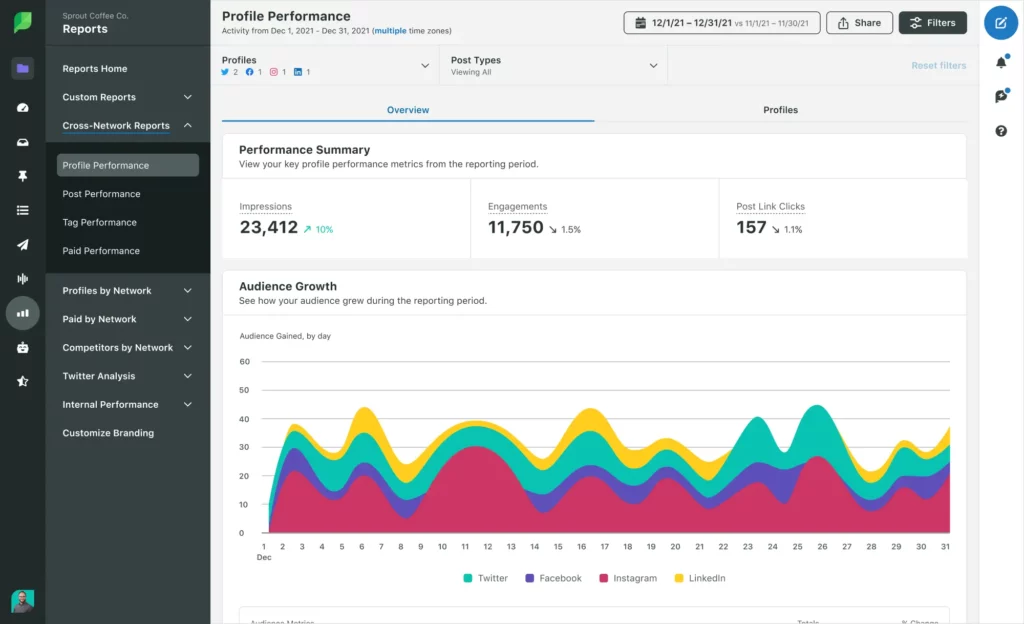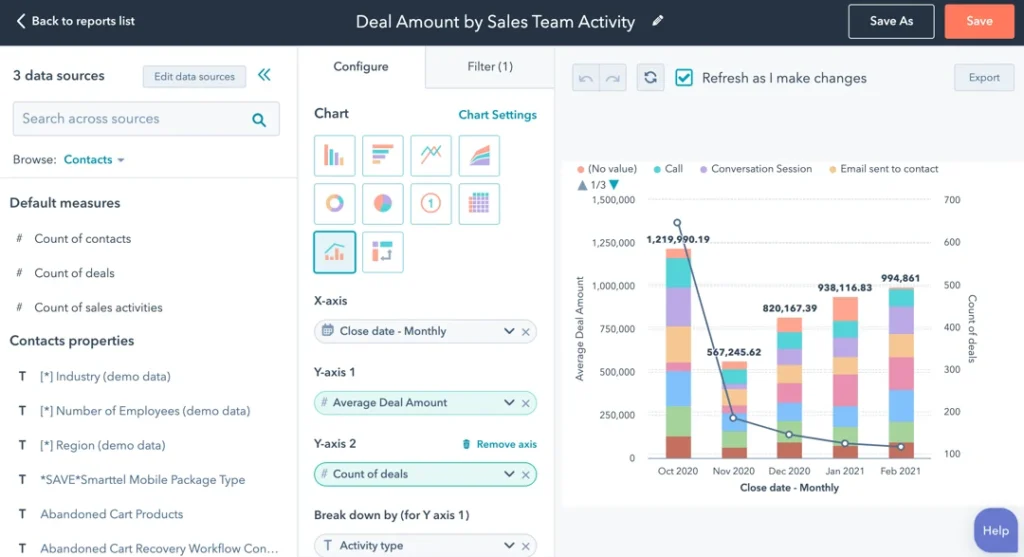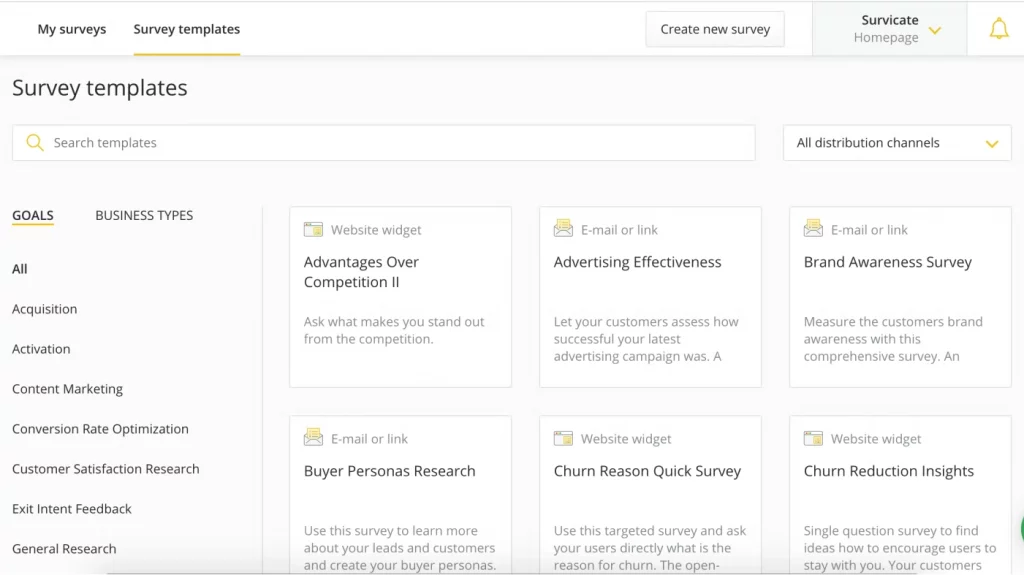Sometimes, communicating effectively is easier said than done. But it’s essential if you want people to connect with both your business and your brand.
In this article, I’m going to take you through the different types of corporate communication. After that, I’ll give you some recommendations for the best corporate communications tools to help your business succeed.
Here’s a roundup of the top corporate communication tools:
- Slack
- Filestage
- FigJam
- Asana
- Calendly
- Sprout Social
- MailChimp
- HubSpot
- WordPress
- Survicate
What is corporate communication?
Corporate communication refers to all the ways a company interacts with others, both within the organization as well as with external audiences, like customers and shareholders. It’s about managing relationships and maintaining a positive image of the company from the inside out.
Since corporate communication is such a broad term, it covers everything from collaborating effectively with teammates to sharing updates about new products or special offers on social media. For this reason, corporate communication can be broken down into two main categories: internal and external.
Let’s take a closer look at each type of corporate communication!
Supercharge your project communication
Share, review, and approve all your content in one place with Filestage.
Internal corporate communication
Internal corporate communication is about how a company communicates with its own employees, teams, and departments. It’s based largely around sharing project updates, company news, and working together efficiently to create a sense of belonging for everyone across the business.
Here are some key aspects of internal communication within a business.
Team collaboration
Teammates need to work together across tasks and projects without going off track or causing delays. This level of collaboration calls for quick, clear communication at all times, supported with the best team communication tools.
Cross-team collaboration
In larger organizations, different departments also need to collaborate and communicate effectively with one another to overcome challenges and achieve common goals.
Corporate culture
Communication plays a large role in shaping and reinforcing company culture. By communicating openly and clearly, your organization can create a healthy, happy work culture that motivates individuals and teams alike. Employee surveys and employee recognition definitely help too!
External corporate communication
External corporate communication is how a company interacts with everyone outside the organization, including customers, shareholders, and the media. The main focus for external communication is on managing the company’s reputation and promoting the brand to the outside world.
Here are some key aspects of external corporate communication.
Customer communication
Customer communication includes marketing messages, consumer journeys, and providing customer support. Effective external communication will help your business bring in and retain customers by catering their needs and experiences.
Shareholder relations
Companies often need to communicate in a clear, timely way with investors and shareholders to build trust and loyalty. You might want to do this through regular financial reports, presentations, and shareholder meetings.
Public relations (PR)
PR communication involves managing the company’s reputation in the media and the public eye as a whole. This includes issuing press releases, dealing with crises, and building good rapport with journalists and influencers.
For modern organizations to stand the test of time, they need to focus on both internal and external communication to create a company that thrives.
Best internal corporate communication tools
Internal communication isn’t only about instant messaging and video calls. There’s a growing variety of communication tools and employee communication software out there. Together, they can help you build an effective internal communication strategy that connects your team so you can tackle tasks with confidence.
Here’s a snapshot of some of the different use cases for the best internal communication tools:
- Instant messaging
- Content feedback
- Virtual brainstorming
- Task management
- Scheduling
Here are my top recommendations for each use case.
1. Slack – best for instant messaging

Source: slack.com
Slack is one of the most popular business communication platforms around that gives remote teams a centralized place to chat and share information in real time.
You might be surprised to hear that Slack’s business communication software has actually been around since 2013, because it only really rose to fame in 2020, with the mass movement to remote work. Since then, this corporate communication tool has remained a staple for businesses around the world, thanks to its user-friendly interface that can be used for instant messaging, video calls, file sharing, and more.
One of Slack’s most popular features is the ability to create group chats called Channels for different topics, projects, or departments. It also integrates with other tools and applications for effective communication across the entire company.
2. Filestage – best for getting feedback on content

If there’s any process that’s sure to put your internal communication to the test, it’s reviewing and approving content. That’s if you don’t have the right business communication tool, of course!
Filestage is your one-stop-shop for reviewing content and sharing feedback with your team, letting you share files, gather feedback, and get work approved ASAP. It’s also packed with features to improve your team’s communication, like real-time comments, due dates, and the possibility to invite as many collaborators as you need.
Another great thing about this platform is that it’s set up to support a range of different file formats (documents, designs, HTMLs, audio files, live websites, videos – you name it). So, different teams and departments within your organization can all work together in the same place.
Filestage also integrates with other popular apps and collaboration tools, including Slack, Dropbox, and Adobe Creative Cloud. Great news for busy marketing and creative agencies!
3. FigJam – best for virtual brainstorming

Source: figma.com
Let’s be honest, it can be hard to replicate the energy of an in-person brainstorm session with your team. But there are more and more great employee communication tools popping up to help you keep the ideas flowing from anywhere. And FigJam is definitely one of the top options.
FigJam is a free online brainstorming tool run by Figma. By setting up shared whiteboards, teams can come together to create mind maps, plan projects, and share inspiration. It offers a range of features to enhance communication, like comments, reactions, @mentions, and live audio.
The tool comes with lots of handy templates to help you get to work faster. Overall, it can be a great addition to any team that needs to put their heads together while working apart.
4. Asana – best for managing tasks

Source: asana.com
Internal corporate communication demands more than DMs, emails, and meetings. It requires businesses to keep employees in the loop at all times so that projects can get done without any miscommunications or surprises. Which is why lots of organizations use a project management tool like Asana.
Asana can be used for all things project-related, from assigning responsibilities to tracking progress. It’s designed to give teams a centralized platform where they can communicate about specific jobs, so they don’t need to rely on scattered emails across different platforms to stay on top of projects.
Live notifications also give teams a heads-up when they’ve been mentioned in a comment, assigned a task, or when there are updates to projects they’re working on. As you can imagine, keeping the lines of communication open in this way makes for a much more productive day’s work.
5. Calendly– best for efficient scheduling

Source: calendly.com
Sometimes, trying to navigate multiple teammates’ schedules to find a suitable time to catch up can take more time than the catch-up itself. Which is the last thing you need when you’re up against a tight deadline!
Calendly is one of those internal communications tools that takes the stress out of scheduling meetings by only showing you the time when everyone is available. No need to badger teammates to ask when they’re free. Simply choose a time slot that works and the meeting will automatically be added to both the attendees’ calendars.
Calendly also offers a range of nifty features like automatic timezone detection and integrations with popular calendar apps.
Best external corporate communication tools
External communication takes many forms, from social media posts to business updates. Luckily, there’s an array of different tools to help you communicate with the world more effectively.
Here are some of the different types of external corporate communication:
- Social media posts
- Emails
- Advertising campaigns
- Website content
- Customer surveys
Let’s look at some of the top customer communications tools to help you nail your external corporate communication!
1. Sprout Social – best for social media management

Source: sproutsocial.com
Social media is without a doubt the best way to reach and connect with most audiences. But getting your social media presence up to scratch takes a lot of planning and consideration.
Quality and consistency are key to success when it comes to social media content. And Sprout Social makes it easier to schedule and post content across all of your social media channels.
As well as managing all your outgoing content, like announcements, stories, and reels, Sprout Social also allows teams to keep track of all their social messages and notifications in one place, too!
Once your content has been posted, you can then measure key metrics like engagement, reach, clicks, and conversions to evaluate the effectiveness of your communication strategies and make data-driven decisions moving forward.
2. Mailchimp – best for email management

Source: mailchimp.com
Email marketing is still a super effective way to communicate with customers and shareholders alike. Mailchimp is a campaign management tool that empowers marketing teams to streamline all their email activity.
With Mailchimp’s corporate communications tool, users can effortlessly create, send, track, and analyze email campaigns with one user-friendly interface. This makes it a powerful solution for both beginners and experienced marketers who want to send professional branded emails.
Some of Mailchimp’s other key features include an easy-to-use drag-and-drop email builder and solid customer segmentation capabilities for targeted campaigns and lead generation.
3. HubSpot – best for campaign management

Source: hubspot.com
An advertising campaign is any series of marketing messages that share a single idea or theme. It can run across print, TV, radio, social, out of home advertising, or a curated mix of mediums to effectively reach your target audience. With so many moving parts, teams need a robust campaign management process in place with a top tool to match.
HubSpot is a multi-talented tool that lets teams manage their entire inbound marketing campaigns. Teams can use templates and automation to create and organize all their campaign assets from a single platform. What’s more, you can even use HubSpot to monitor campaign performance to bring in more leads and convert prospects over time.
4. WordPress – best for managing website content

Source: wordpress.org
All going well, your social media content and marketing campaigns should drive more people to your website and increase sales (fingers crossed!). So you’ll want to make sure your website content is as slick as the rest of your external corporate communication.
WordPress is one of the most popular and long-lasting content management systems (CMS) that helps teams collaborate and create knockout websites with ease. It offers users everything from text and media management to user roles and built-in audience comment features.
Another upside to using WordPress is that it’s flexible when it comes to pricing, as users only have to pay for the features they actually need. This makes it a great option for startups on a budget or side-hustling bloggers that want to keep costs down.
5. Survicate – best for collecting customer feedback

Source: survicate.com
Of course, effective external communication and customer relationship management goes both ways. Which is why listening to your audience plays a crucial role in the success of your business. And one of the best ways to do this is through customer surveys.
Survicate is a powerful tool that helps businesses create, launch, and analyze surveys to get a deeper understanding of their customers’ wants and needs. These surveys are incredibly easy to set up, customizable, and available in a variety of different languages. With Survicate, you can launch surveys via email, on your website, in your product, and even through mobile apps!
Final thoughts
Corporate communication is made up of many different factors, from collaborating with teammates to keeping your customers informed and engaged. Thankfully, there are many great tools that make corporate communication easier, too.
I hope this article has helped you find the best corporate communication tools for your business. And if you’d like to see how Filestage can improve the way your teams communicate when reviewing content, start your free trial today.









